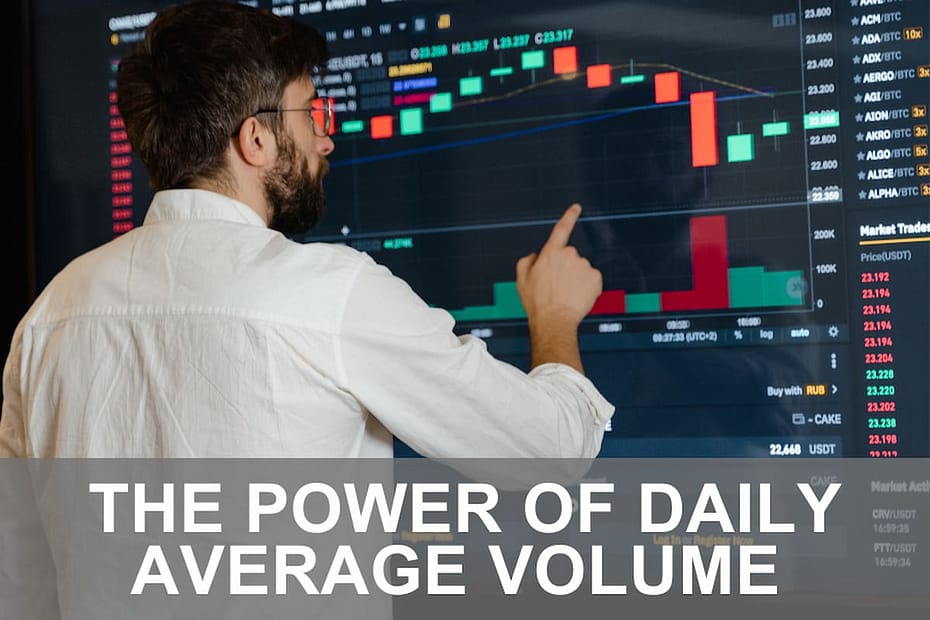Once upon a time, before average daily volume was a thing in the bustling city of Wall Street, there lived a diligent investor named Alice. Alice was passionate about the stock market and constantly sought ways to improve her trading strategies.
She had heard whispers among fellow investors about the mysterious metric called Average Daily Volume (ADV) and its ability to reveal valuable insights about the market.
Curiosity piqued, Alice set out on a journey to uncover the secrets of ADV and understand how it could shape her investment journey.
Unveiling the Importance of Average Daily Volume
As Alice delved deeper into her research, she discovered the first hidden gem of ADV: liquidity.
Liquidity and Investor Sentiment Revealed
ADV acted as a barometer, indicating the level of liquidity in a particular stock or market. Higher average daily volumes were like streams flowing swiftly with eager participants, ensuring that orders could be executed promptly and at more favorable prices.
This liquidity minimized the impact of slippage, providing Alice with a smoother trading experience.
Moreover, ADV held a mirror to the investor sentiment surrounding a stock. Alice learned that stocks with high ADV often signified substantial investor interest and attention.
They were like shining stars, capturing the gaze of market participants. This popularity not only made these stocks potentially profitable but also attracted institutional investors and market makers, further enhancing liquidity and tightening bid-ask spreads.
Alice understood that monitoring ADV could offer her valuable insights into the sentiment and profitability of stocks.
Timing Entry and Exit Points with Average Daily Volume
Armed with the knowledge of ADV, Alice realized that it could be a powerful tool for timing her entry and exit points in the market.
Capitalizing on Opportunities
ADV had the ability to whisper secrets about significant market events. Sudden spikes in ADV often accompanied company announcements, earnings releases, or breaking news that could impact stock prices.
By closely monitoring ADV, Alice could identify these events and adjust her trading strategy accordingly. For instance, a surge in ADV could signal increased buying or selling pressure, hinting at a potential trend reversal or breakout.
With this information, Alice could time her entry or exit points more effectively, capitalizing on market opportunities.
Calculating and Utilizing Average Daily Volume
Excited to put her newfound knowledge into practice, Alice dived into the world of calculating and utilizing ADV.
A Practical Approach
She learned that ADV was derived by dividing the total volume traded over a specific period by the number of trading days within that timeframe. This calculation provided an average representation of trading volume, empowering Alice to make informed decisions.
Alice also discovered that ADV was not limited to individual stocks but could be applied to indices and the broader market.
By comparing the ADV of a particular stock with others or even the overall market, Alice could assess its relative activity and trading potential.
Armed with this information, she could refine her strategies and navigate the market more confidently.
Harnessing the Power of Average Daily Volume
As Alice’s story unfolded, she realized the profound impact ADV could have on her investment journey.
Empowering Your Investment Journey
It served as a guiding compass, illuminating the path to liquidity, investor sentiment, and potential opportunities.
By incorporating ADV into her investment strategies, Alice could make better-informed decisions, manage risks effectively, and potentially maximize her returns.
Dear reader, just like Alice, you too can harness the power of Average Daily Volume. By understanding ADV and its implications, you can unlock a new level of insight into the market.
Embrace the knowledge, calculate ADV, and let it guide you toward well-timed entry and exit points, as you navigate the exciting world of stocks and trading.
Some terms you should know:
- AAPL: Ticker symbol for Apple Inc., a multinational technology company.
- ADV: Abbreviation for Average Daily Volume.
- AMC: Ticker symbol for AMC Entertainment Holdings Inc., a movie theater chain.
- Bloomberg: Financial data and news platform.
- NYSE: Abbreviation for New York Stock Exchange, one of the world’s largest stock exchanges.
- S&P 500: A stock market index that measures the performance of 500 large companies listed on U.S. stock exchanges.
- Nasdaq: A global electronic marketplace for buying and selling securities.
- Forex: Foreign exchange market, where currencies are traded.
- Cryptocurrency: Digital or virtual currency that uses cryptography for secure financial transactions.
- Options: Financial derivatives that give the holder the right, but not the obligation, to buy or sell an underlying asset at a predetermined price within a specific time period.
- Bid-ask spread: The difference between the highest price a buyer is willing to pay (bid) and the lowest price a seller is willing to accept (ask) for a security.
- Slippage: The difference between the expected price of a trade and the actual executed price, often due to market volatility or insufficient liquidity.
